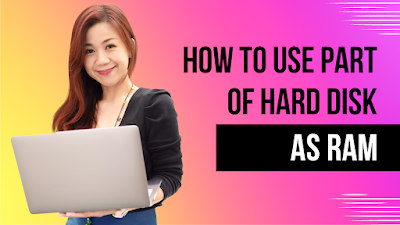Introduction To Using Virtual Memory on PC
As computer users, we all want our machines to run as smoothly and efficiently as possible. One tool that can help us achieve this goal is virtual memory. In this blog post, we will answer some of the most common questions about virtual memory, including its definition, how it works, and how to configure it for optimal performance.
What is Virtual Memory?
Virtual memory is a feature of the Windows operating system that allows the computer to use a portion of the hard disk as additional memory when physical RAM is limited. This can be helpful when running memory-intensive applications or multiple programs simultaneously.
How Does Virtual Memory Work?
When the amount of data required by the running programs exceeds the available physical RAM, the system uses the hard disk to temporarily store the excess data. This is done by dividing the hard disk space into segments that can be used as virtual memory, and managing these segments via virtual memory algorithms.
Why Would I Need to Use Virtual Memory?
Virtual memory can be beneficial in several scenarios, including:
Running memory-intensive applications or multiple programs simultaneously.
Working with large files or datasets.
Using older systems with limited physical RAM.
How Do I Configure Virtual Memory on Windows?
To configure virtual memory on Windows, follow these steps:
Access System Properties.
Go to Performance Options.
Configure Virtual Memory settings.
Adjust the initial and maximum size values.
Save changes and restart the computer.
How Much Virtual Memory Should I Allocate?
When determining the appropriate virtual memory allocation, consider the following factors:
- The amount of physical RAM installed on your system.
- The types of applications or tasks you frequently run.
- The available free space on the hard disk.
As a general guideline, allocate virtual memory equal to 1.5 to 2 times the amount of physical RAM installed on your system.
Can I Allocate Virtual Memory on Multiple Drives?
Yes, you can allocate virtual memory on drives other than the system drive. When selecting the appropriate drive for virtual memory allocation, consider factors such as available free space and the type of drive (e.g. solid state vs. traditional hard disk).
What are the Pros and Cons of Using Virtual Memory?
Some of the advantages of virtual memory usage include:
Allowing for efficient multitasking and running memory-intensive applications.
Preventing system crashes or freezing when physical RAM is insufficient.
Some of the potential drawbacks include:
- Slower performance compared to physical RAM.
- Increased disk activity, which may lead to wear and tear on the hard disk.
Can I Disable Virtual Memory?
While it is possible to disable virtual memory entirely, it is generally not recommended as it can cause system instability and program crashes. Instead, adjust the virtual memory settings to optimize its performance.
How Can I Optimize Virtual Memory Performance?
To optimize virtual memory usage, follow these tips:
- Keep the system and applications updated.
- Minimize background processes and unnecessary applications.
- Avoid excessive disk fragmentation through regular maintenance.
- Upgrade physical RAM if possible to reduce reliance on virtual memory.
Conclusion
Virtual memory is a powerful tool that can help users expand the capabilities of their Windows systems. If you are on mobile settings up ram Plus on Your device Can give you that extra boost. By understanding how it works and how to configure it for optimal performance, users can enjoy a smoother and more efficient computing experience. Just remember to use virtual memory wisely and keep an eye on its limitations.

